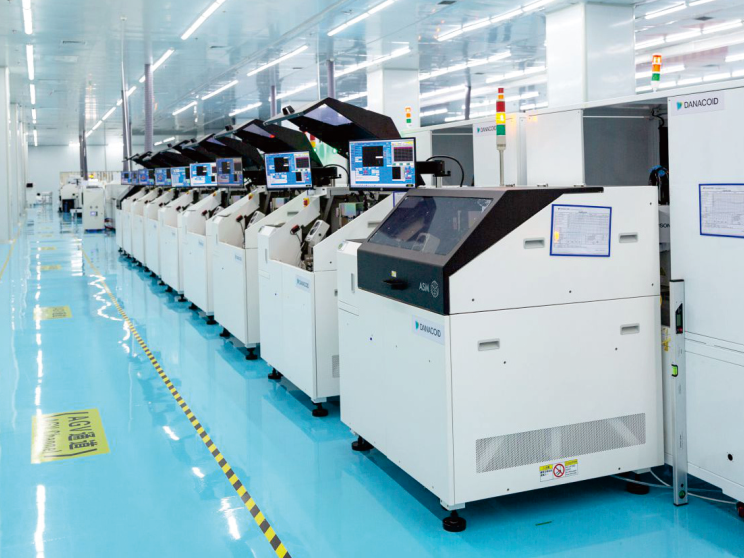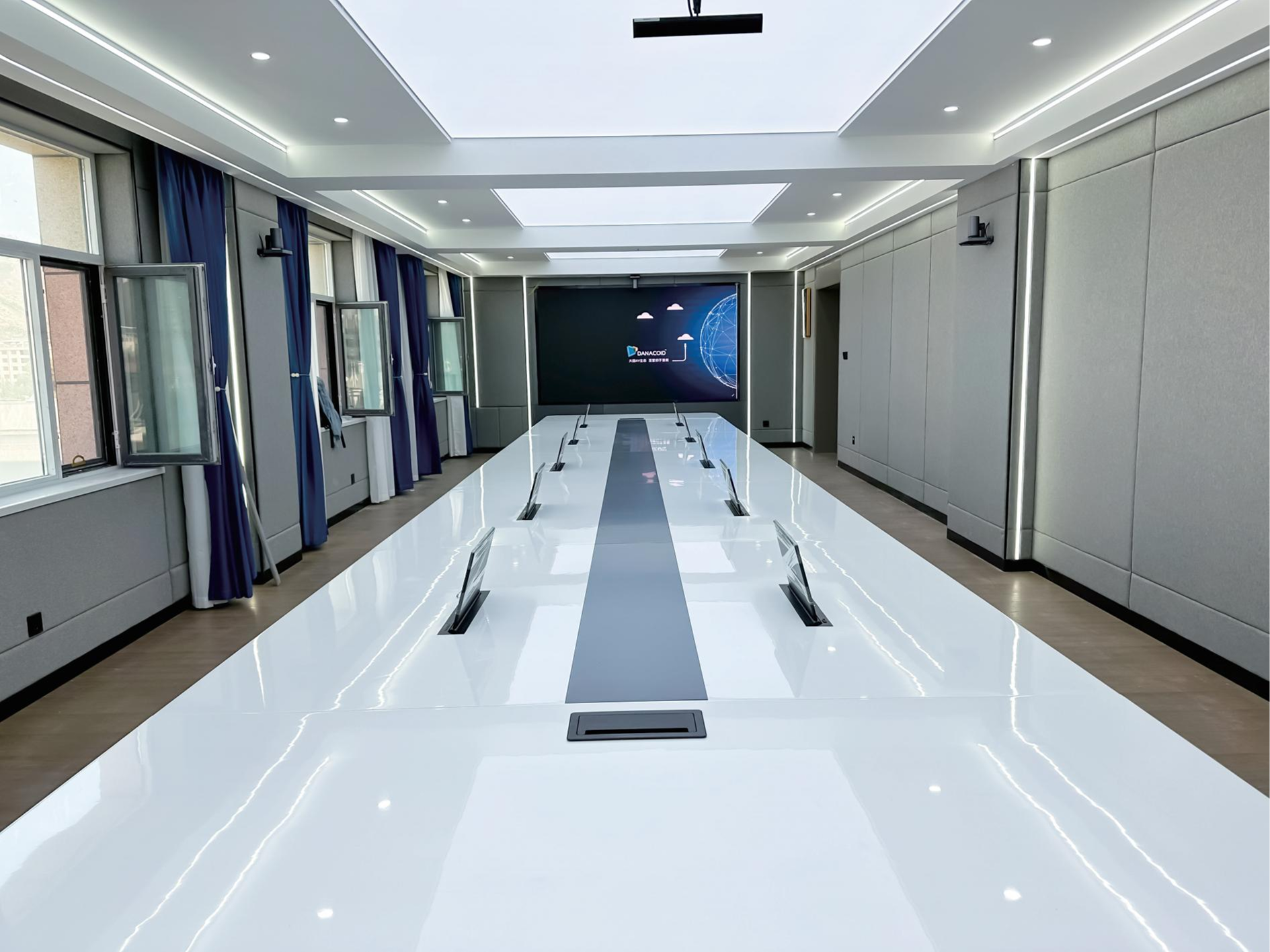Impact of Incorrect Height on Sound Quality
Proper height placement of wall-mounted speakers is crucial for ensuring the best sound quality. Incorrect heights can result in suboptimal listening experiences, where sound clarity and bass responses suffer. According to audio expert Kate Wagner, a graduate student focused on architectural acoustics, aligning speakers with the listener's ear level is fundamental. This positioning minimizes sound distortion and optimizes fidelity. When the speakers are too high or too low, the audio quality may vary, and you might encounter issues such as sound projections missing the intended listening area, causing a loss in clarity and bass. Research suggests aligning speakers at ear-level enhances both high and low-frequency sounds, providing a balanced auditory experience.
Optimal Positioning for Surround Sound Systems
To achieve an immersive audio experience, the optimal positioning of surround sound systems is key. Ideally, speakers should be arranged according to well-tested audio design principles, such as the 5.1 or 7.1 surround sound setups. This involves careful attention to angles and distances, ensuring that each speaker is equidistant from the listening area to create an effective soundstage. Using spatial audio principles, the placement should allow sound to envelop the listener, enhancing the overall ambiance of the environment. For instance, the side speakers should be positioned at an angle of about 90 to 110 degrees from the listener, while rear speakers may benefit from slightly elevated positioning to enhance depth and sound field.
Avoiding Reflections from Adjacent Surfaces
Proper placement of wall-mounted speakers must also consider reflections from nearby surfaces to maintain sound clarity. When speakers are too close to walls or other reflecting surfaces, it can cause acoustic reflections, impacting audio fidelity. These reflections often produce muddy sounds as they bounce off nearby surfaces, combining with direct sound in a manner that disturbs clarity. Structural acoustics findings emphasize the necessity of maintaining a considerate distance from potential reflecting surfaces, such as walls or large furniture. Solutions include angling speakers away from walls or using sound-absorbing materials to dampen potential reflections, ensuring the audio remains clear and precise, providing listeners with a quality auditory experience.
Identifying Unstable Wall Brackets
Unstable wall brackets can significantly affect the performance of wall-mounted speakers. Identifying signs of improper installation is crucial; look for tilting or wobbling of the speakers as indicators. According to expert opinions, proper bracket installation can lead to noticeable improvements in sound quality. Using expert tools for mounting hardware inspection can effectively assess the stability of wall-mounted speakers and address any potential issues promptly. Ensuring that your speakers are properly secured is vital to maintain sound fidelity and prevent sound distortion due to vibrations.
Securing Anchors for Different Wall Types
Different wall types, such as drywall and brick, require specific anchoring methods to securely mount speakers. Understanding the load-bearing capacity of each wall type helps in selecting the correct anchors and screws, preventing loosening and vibrations of the speakers. For instance, using plastic or toggle anchors in drywall and expansion anchors in brick walls ensures a tight grip. It's crucial to follow technical specifications for anchor selection to secure your speakers adequately, allowing for optimal sound performance without worrying about vibrations or instability.
Reducing Resonance with Anti-Vibration Pads
Using anti-vibration pads can effectively enhance the stability of speakers and reduce noise pollution. These pads play a crucial role in vibration dampening and acoustic isolation. Case studies have shown significant improvements in resonance reduction when anti-vibration pads are employed. Selecting suitable pad materials is essential for optimizing sound performance, as they absorb unwanted vibrations and allow the speaker to deliver clear sound without interference. Integrating these pads not only enhances the acoustic experience but also safeguards the wall-mounted speakers by minimizing vibrations from wall surfaces.
Cable Management Challenges
Hiding Wires with In-Wall Conduits
In-wall conduits offer an efficient solution for managing and concealing cables, promoting both safety and aesthetic appeal. Here's a step-by-step guide on how to effectively use them:
- Plan the Conduit Path: Identify the best route for your cables that minimizes bends and maximizes space efficiency.
- Follow Local Safety Codes: Adhere to any local building codes related to in-wall installations, ensuring safety and compliance.
- Install Conduits: Carefully cut openings in your drywall to position the conduits, ensuring they are securely fixed.
- Cable Concealment: Guide your cables through the conduits, effectively concealing them to create a tidier appearance.
Using in-wall conduits not only enhances your room's aesthetics but also promotes space efficiency, as cables are out of sight but easily accessible when maintenance is needed.
Using Painter-Friendly Cable Covers
Painter-friendly cable covers can seamlessly blend into your interior design, offering a practical alternative for managing external cables. Various types of covers are available, crafted from materials like PVC that can be painted to match your walls. When choosing a cover, consider factors such as artwork compatibility and durability. PVC covers are perfect for homes with vibrant décor as they are easy to paint, allowing them to blend in flawlessly.
For a DIY touch, consider these methods:
- Painting: Match covers to your wall colors for a seamless blend.
- Stenciling or Murals: Add decorative elements on top of covers to integrate with your room's theme.
Such decorative cable management techniques can transform an otherwise unsightly necessity into an appealing feature of your home décor.
Preventing Interference from Power Lines
Proximity to power lines can often lead to audio interference, which disrupts the quality of sound from wall-mounted speakers. To minimize Electromagnetic Interference (EMI), maintain a safe distance between your audio cables and electrical power cables. Electrical engineering principles suggest:
- Separate cable pathways: Avoid running audio cables parallel to power lines; if unavoidable, aim for at least a 12-inch gap between them.
- Use Shielded Cables: These are specially designed to reduce EMI and should be considered in high-interference environments.
- Cross at angles: If audio and power lines must cross, do so at a 90-degree angle to minimize interference.
Implementing such strategies not only preserves audio clarity but also enhances overall system reliability, ensuring an uninterrupted listening experience.
Acoustic Issues in Hard-Surfaced Rooms
Combating Echo with Absorptive Materials
When dealing with echo problems in rooms with hard surfaces, it’s essential to consider how these surfaces contribute to sound reverberation. Hard materials such as concrete, tile, or glass can reflect sound waves, leading to prolonged echo, also known as increased reverberation time. To combat this issue, we can utilize absorptive materials like acoustic panels, foam, or heavy curtains. A study on acoustic treatment demonstrated that these materials could reduce echo by up to 60%, significantly enhancing sound clarity. For effective sound absorption, consider strategically placing these materials in problem areas to optimize their impact.
Strategic Placement of Acoustic Panels
Effectively placing acoustic panels can significantly improve sound absorption in a room. To maximize the benefits, start by identifying areas where sound reflections are most problematic, such as walls opposite your wall mounted speakers or near ceilings. Although I can't provide diagrams here, think of placing panels in a checkerboard pattern for optimal coverage. Scientific approaches suggest placing panels at strategic angles to intercept straight sound paths, enhancing acoustic treatment strategies. By carefully selecting and positioning your panels, you can achieve superior audio quality and a more controlled acoustic environment.
Area Rugs vs Bass Traps for Low Frequencies
Controlling low-frequency sounds is crucial, and comparing the effectiveness of area rugs versus bass traps sheds light on this aspect. Area rugs can soften sound and are practical for reducing some higher-frequency issues, but they often fall short for bass control. On the other hand, bass traps are specifically designed to manage low-frequency sounds or bass response, providing superior results. Experts suggest that in environments prone to heavy bass, integrating bass traps can lead to a more balanced and controlled acoustic treatment. Choosing between these solutions depends greatly on the specific sound dynamics of your space and the desired acoustic treatment integration.
Smart Speaker Connectivity Problems
Addressing smart speaker connectivity issues involves tackling Bluetooth pairing failures, updating firmware, and resolving WiFi conflicts. These are common roadblocks encountered by many users.
Resolving Bluetooth Pairing Failures
Bluetooth pairing issues are often caused by common factors such as frequency interference, device memory cache errors, or outdated profiles. The following steps can effectively troubleshoot these issues:
- Check Bluetooth Compatibility: Ensure that your devices support compatible Bluetooth profiles like A2DP or AVRCP.
- Reboot Devices: Restart both the speaker and the connecting device to reset memory caches.
- Clear Paired Devices: Remove old devices from the Bluetooth list to prevent memory overload.
User experience reports frequently highlight pairing issues, indicating that nearly half of users encounter these problems at some point. By understanding the technical aspects, such as Bluetooth profiles and device compatibility, users can better manage their Bluetooth connections.
Updating Firmware for Stability Improvements
Firmware updates play a crucial role in enhancing smart speaker performance. They not only address bugs but also integrate new features that can significantly improve user satisfaction. For instance, many devices see stability improvements after successful updates, with users reporting smoother operations and fewer connectivity issues.
The process for a firmware update typically involves navigating to the device settings within an associated app and checking for new releases. These updates are directly linked to software stability and can often provide a solution to recurring issues. Given the impact of firmware on device performance, regular updates should not be overlooked.
Troubleshooting WiFi Network Conflicts
WiFi network conflicts are another major hurdle affecting smart speaker operations. Common issues like network congestion or signal interference can degrade device performance. To address these conflicts:
- Optimize Router Placement: Position the router to ensure strong signal strength throughout the area.
- Change WiFi Channels: Utilize less congested channels to enhance network efficiency.
- Identify Signal Interferences: Address physical obstructions or reduce the impact of interfering devices.
Research indicates that network performance directly influences the effectiveness of connected devices. By recognizing and remedying network congestion and signal interference, users can significantly improve their smart speaker interaction and overall device functionality.
Electrical Ground Loop Interference
Diagnosing Hum from Multiple Power Sources
Ground loop interference is a common dilemma in audio systems when multiple devices are connected to different power sources, causing an audible hum or buzz. This problem arises due to a 'ground potential difference', where each device's grounding path has a varying voltage level. To diagnose the issue, unplugging all connected audio devices first might help in pinpointing the origin of the hum—whether it persists or ceases can direct whether it's due to a ground loop or another form of interference. Craig Walker, a seasoned expert in audio equipment, suggests testing with devices having built-in audio sources like Bluetooth to differentiate ground loop issues from others effectively.
Installing Ground Loop Isolators
Implementing ground loop isolators can be a practical measure to tackle the irritating hum caused by ground loop interference. These isolators work by safeguarding 'signal integrity' and significantly minimizing 'noise reduction', thereby enhancing audio output. With their ability to maintain a 1:1 input-to-output voltage ratio, ground loop isolators avert unwanted voltage fluctuations that interfere with audio signals. Experts have noted impressive effectiveness rates for isolators in reducing audio interference. When choosing an isolator, think about its type: some plug directly in-line with existing audio cables allowing for seamless integration without the need for extensive rewiring or disconnection.
Star Grounding Techniques for AV Systems
Star grounding techniques offer a systematic approach to improving audio signal quality by centralizing the grounding point for all connected devices. In doing so, this method reduces 'ground distribution' discrepancies and bolsters 'audio performance enhancement'. By having a single grounding point, devices maintain a uniform potential, thus minimizing the chances of ground loops. Expert opinions suggest that employing star grounding in custom setups can enhance overall system performance, especially in complex home theater systems. Thorough planning, along with strategic placement of grounding wires, demonstrates the utility of star grounding in maintaining clean audio outputs.
Frequently Asked Questions (FAQ)
Why is the proper height important for wall-mounted speakers?
The proper height ensures sound clarity and bass responses are optimized, minimizing distortion and enhancing fidelity. Adjusting speakers to ear level is key to maintaining quality sound.
How can I avoid reflections from adjacent surfaces?
Avoid placing speakers too close to walls or large furniture. Angling speakers away and using sound-absorbing materials will reduce unwanted reflections and maintain audio fidelity.
What materials should be used to combat echo in hard-surfaced rooms?
Utilize absorptive materials such as acoustic panels, foam, or heavy curtains to reduce echo by up to 60% for improved sound clarity.
How do I secure wall-mounted speakers on different wall types?
Use specific anchoring methods; toggle anchors in drywall and expansion anchors in brick walls to prevent vibrations and ensure stable mounting.
What are ground loop isolators and how do they help?
Ground loop isolators prevent unwanted voltage fluctuations, reducing the hum caused by ground loop interference, and ensuring clear audio output.
Table of Contents
- Impact of Incorrect Height on Sound Quality
- Optimal Positioning for Surround Sound Systems
- Avoiding Reflections from Adjacent Surfaces
- Cable Management Challenges
- Acoustic Issues in Hard-Surfaced Rooms
- Smart Speaker Connectivity Problems
- Electrical Ground Loop Interference
- Frequently Asked Questions (FAQ)









